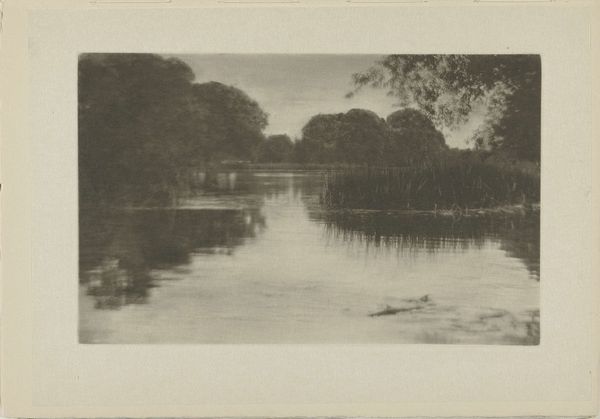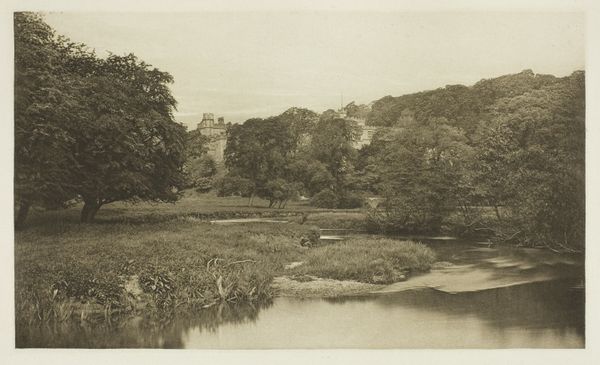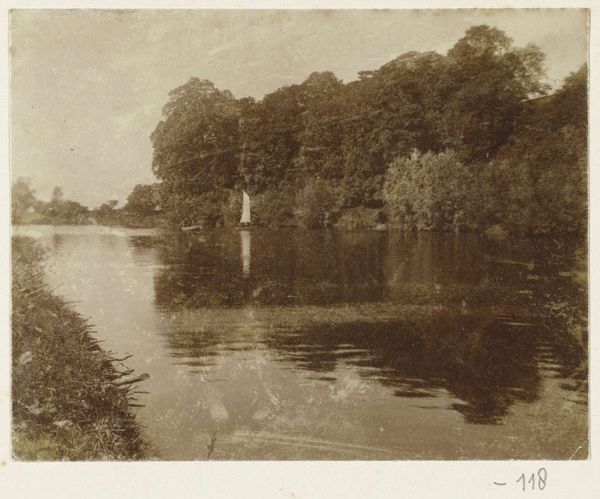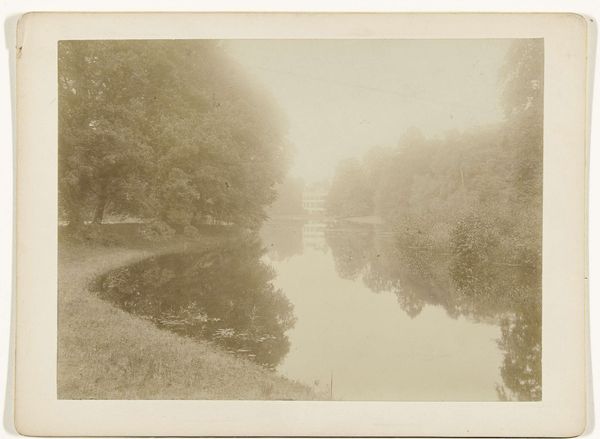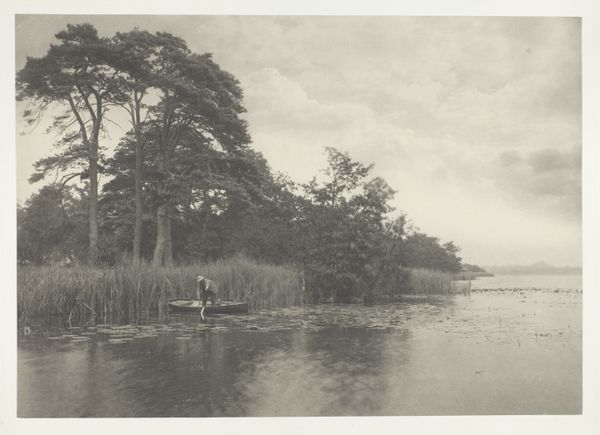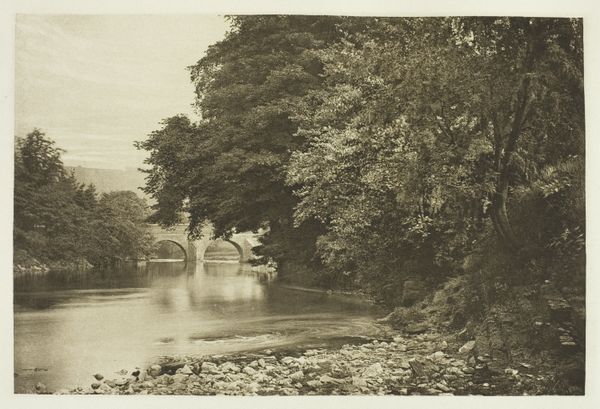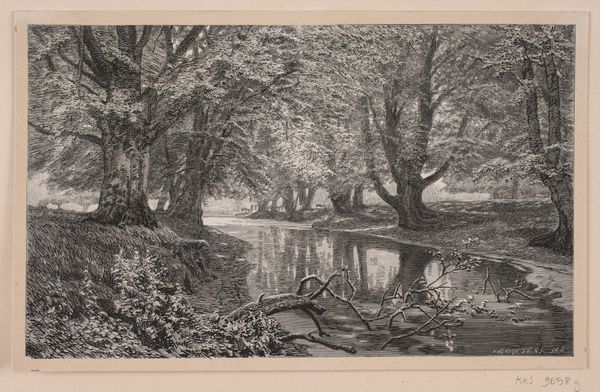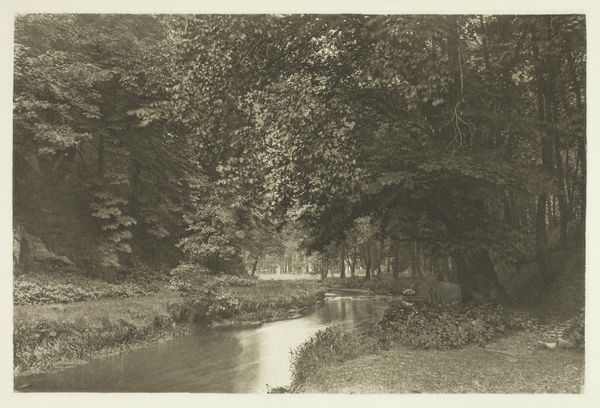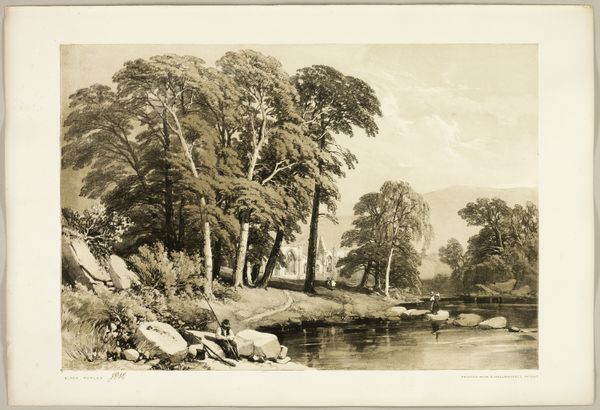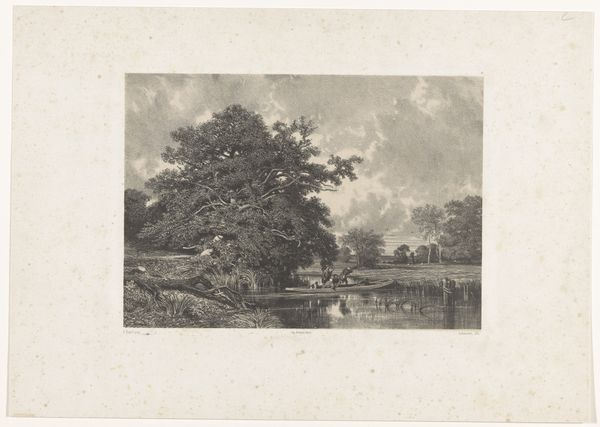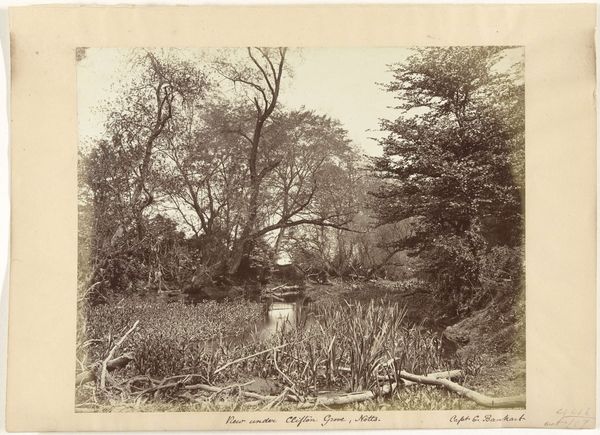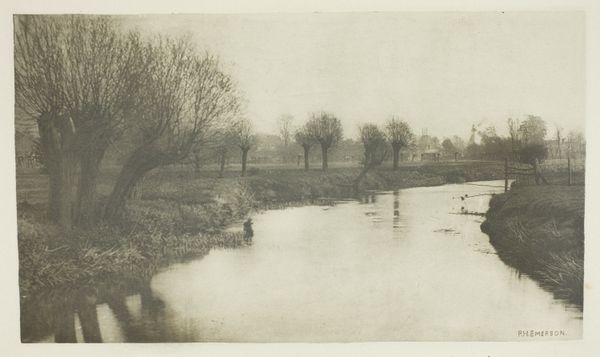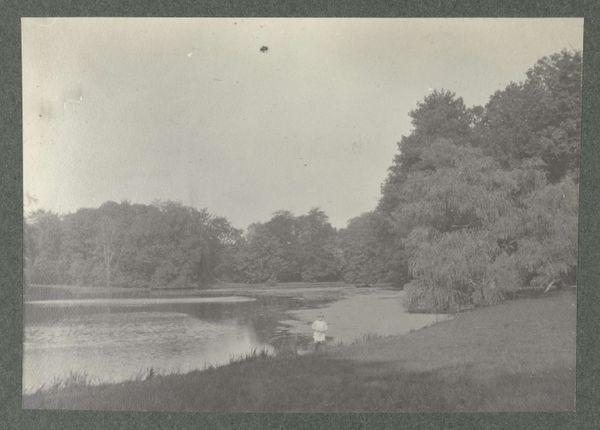
photography
#
pictorialism
#
impressionism
#
landscape
#
nature
#
photography
#
england
#
realism
Dimensions: 13.1 × 19.9 cm (image); 15.7 × 22.1 cm (paper); 24.3 × 31.9 cm (album page)
Copyright: Public Domain
Curator: Peter Henry Emerson made this photograph of the River Wye, Crow-Island Stream, sometime in the 1880s. It's quite striking, isn’t it? Editor: It feels immediately like a memory... sort of hazy, serene. It reminds me of dawns in England somehow, even though I've never been. Does that make sense? It's like I know this place. Curator: I think it's intentional. Emerson championed Pictorialism, a movement emphasizing artistic effect over strict realism. It's not just about recording the landscape, but evoking a feeling. River Wye, particularly, offers this melancholic reading with subdued tones and soft focus that invites introspection. Editor: That makes total sense. Look at the reflection on the water – it almost blurs the boundary between the real and the imagined. I can almost feel the quiet, see myself dipping my toes there, watching the time pass by with the streaming waters... Curator: The River Wye has held this cultural significance and spiritual symbolism, flowing for centuries as both a resource and a site for contemplation, you know. Water symbolizes constant change and transformation...Emerson’s choices mirror that fluidity of perception. Editor: It's interesting because on the one hand there's this stillness. Yet, like you said, it all flows somehow; but what about the tree at the right? The leaves feel so detailed while everything is hazy, they look more modern. It throws me a bit. Curator: Perhaps to give viewers this connection to the world with nature taking the lead while time moves? Consider the symbolism: trees anchor, but their leaves shift and fall—marking change even amidst steadfastness. England has often depicted Nature and landscape this way since the early 19th century. Editor: Hmm. And the lack of any human presence adds to this feeling. This place exists for itself... or, perhaps, for an unseen witness? Like me, I guess! Curator: Or us all... We imbue the work with whatever emotional state we bring to it, yes. I'm still fascinated with how photographers working at that time walked the line between documentation and interpretation so well, shaping the viewers' subjective perception of that imagery. Editor: It makes you wonder if that river is still flowing like that, or if time has blurred that, too, past our capacity of understanding the artist's original impression. This image is like capturing the whisper of a fleeting moment. I like the challenge Emerson proposes for us, thank you for all of this. Curator: Thank you; indeed, and that challenge is art. I won't see it with the same eyes now!
Comments
No comments
Be the first to comment and join the conversation on the ultimate creative platform.
